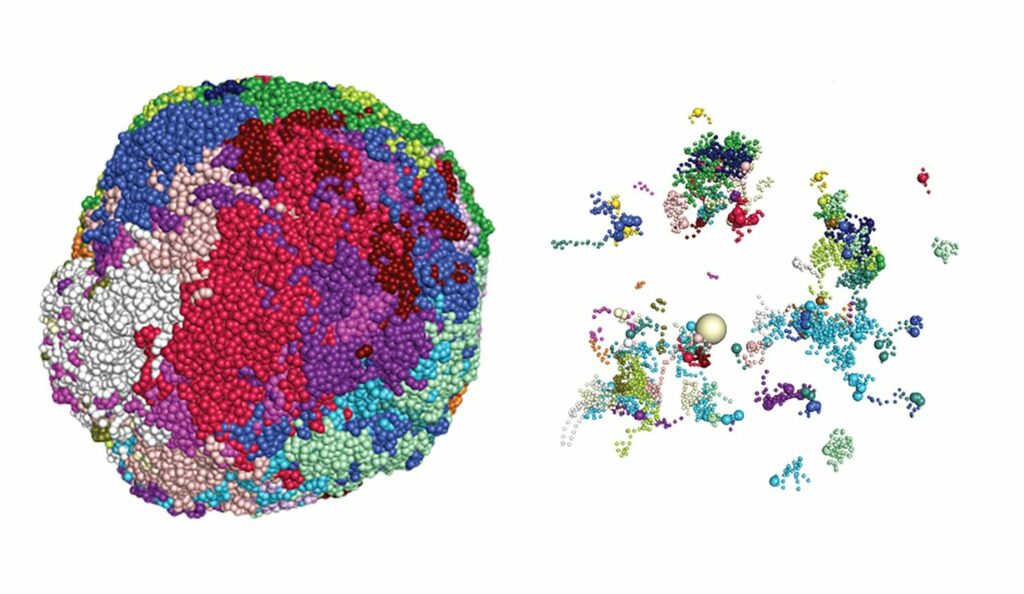From vanilla to lemon scents, the battle for dominance within our noses is ‘more dramatic’ than we thought. Explore the scientific revelations that are shaping the narrative behind our sense of smell. It’s a battle – and the details are captivating!
The mammalian nose is an evolutionary masterpiece. Its millions of nerve cells, each programmed with only one of thousands of specialized odor-chemical sensors encoded in the DNA, can detect a trillion different odors.
These sensations, in turn, influence a wide range of actions, from selecting food alternatives to recognizing friends from opponents to recalling memories.
Scientists at Columbia’s Zuckerman Institute, leading a research team, have unveiled a previously undisclosed mechanism in mice. This mechanism, driven by the genetic molecule RNA, offers insights into the process by which each sensory cell, or neuron, in mammalian noses becomes specialized to detect a particular odor chemical.
To illustrate, sensory neurons in our nostrils possess receptors finely tuned to detect ethyl vanillin, the primary odorant in vanilla, along with receptors designed for limonene, the distinctive odorant found in lemons.
“How sensory cells in the nose make their receptor choices has been one of the most vexing mysteries about olfaction,” comments corresponding author Stavros Lomvardas from Columbia’s Zuckerman Institute. “Now, the story behind our sense of smell, or olfaction, is becoming clearer, and also more dramatic.”

The sense-enhancing drama he refers to takes place exclusively inside the small limits of each olfactory neuron’s nucleus, which houses the cell’s chromosomes and genes. In a victor-takes-all tournament like Squid Games, a growing cell’s countless olfactory receptor genes compete with one another in a process that narrows them down, stage by stage, to a handful of finalists and ultimately to a single winner.
The dominant gene determines the odorant sensitivity of the cell. Dr. Lomvardas and his colleagues’ research reveals specifics of the last step of this process, when the winner emerges from the finalist genes.
“It’s basically a battle between a 1000 contenders,” adds first author Ariel Pourmorady from the Zuckerman Institute.
The story is very complicated, with a dizzying cast of molecular characters. A multitude of gene-regulating substances have functions in either increasing or decreasing each gene’s capacity to create olfactory receptors. These molecular actors help switch certain genes on or off by forming diverse partnerships throughout the genome.
Another set of molecular hubs is also at work, reshaping parts of the genome to favor certain receptor genes. Dr. Lomvardas called them “Greek Islands” when his team initially discovered them in the genome in 2014 because they reminded him of Aegean Sea islands.
“It turns out that the genome has a certain spatial organization in the nucleus and changes in this structure are pivotal when it comes to which genes are expressed into proteins, like olfactory receptors,” explains Pourmorady. “We are learning just how important this process is within maturing olfactory cells.”
The researchers provide a plethora of evidence from animal experiments that point to RNA as the key molecule in the olfactory system’s gene-choosing process in their new Nature study.
RNA is best recognized as the intermediary molecule that converts the genetic information inherent in DNA into protein molecules with specialized physiological functions, such as odor detection.
Using advanced tools for evaluating changes in genome structure as cells age, the researchers claim to have discovered a critical second job for RNA.
“It looks like the RNA the cell makes during gene expression also is altering the genome’s architecture in ways that bolster the expression of one olfactory receptor gene while also shutting down all the others,” Pourmorady notes.
There are still many holes in this genome-controlling narrative, but the researchers think the pattern is getting clearer. It begins with growing olfactory cells, which express a large number of receptor genes at genomic hubs where gene-regulating molecules and complexes, such as Greek Islands, converge.
The RNA then reduces the number of competing olfactory-receptor genes to one. The hub in each cell where the molecular stars align to create the most RNA wins the competition. The expression of receptor genes skyrockets at this node. However, RNA from that same hub may weave its way to all the other hubs, acting as a slinky saboteur. The RNA produces shape changes in the genome at particular places, which inhibit gene expression.
This final product is a nose’s worth of developed olfactory neurons, each with just one odorant receptor on its surface.
“We are reaching the edge of science fiction when it comes to the molecular and genomic details we now can observe inside a single cell’s nucleus,” adds Dr. Lomvardas. “We need to keep going back in to figure out the rest of this olfaction puzzle.”
Source: 10.1038/s41586-023-06845-4
Image Credit: iStock
